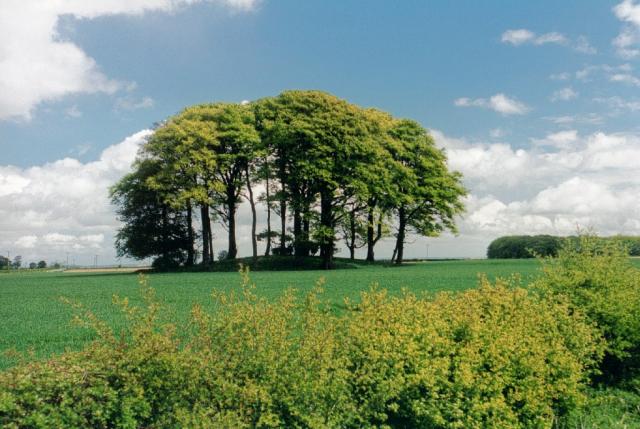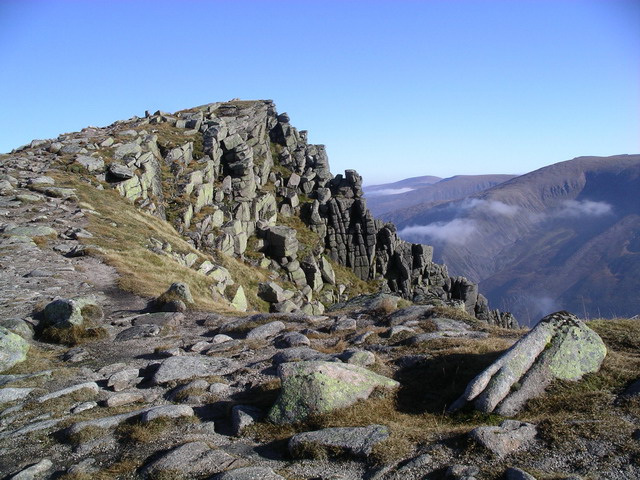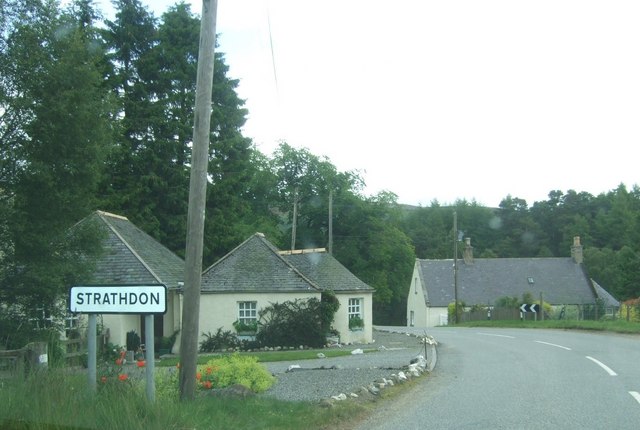|
Càrn Mòr (Ladder Hills)
Càrn Mòr (804 m) is the highest mountain of the Ladder Hills on the border of Aberdeenshire and Moray, Scotland. It is located northeast of the Cairngorm Mountains near Strathdon. It rises high above Glenlivet Glenlivet () is a glen in the Highlands of Scotland through which the River Livet flows. The river rises high in the Ladder Hills and flows past several distileries and hamlets and then onto the Bridgend before joining the River Avon, one of ... in an area once renowned for its whisky smuggling. References {{reflist Mountains and hills of Aberdeenshire Mountains and hills of Moray Marilyns of Scotland Corbetts Glenlivet ... [...More Info...] [...Related Items...] OR: [Wikipedia] [Google] [Baidu] |
Corbett (hill)
This is a list of Corbett mountains in Scotland by height. Lists of mountains and hills in the British Isles#Corbetts, Corbetts are defined as Scottish mountains between in height with a prominence of at least ; solely imperial measures, imperial measurement thresholds. The first list was compiled in the 1920s by John Rooke Corbett, a Bristol-based climber and Scottish Mountaineering Club ("SMC") member, and was published posthumously, after his sister passed it to the SMC, in the 1953 edition of ''Munro's Tables''. Corbetts are the next category down from the Lists of mountains and hills in the British Isles#Munros, Munros and Munro Tops in terms of height (''i.e.'' below the elevation threshold of ), but their explicit prominence threshold of , ensure they are material peaks. By definition, all Corbetts, given their prominence, are Lists of mountains and hills in the British Isles#Marilyns, Marilyns. The SMC keeps a list of Corbetts. , there were 222 Corbetts in Scotland. ... [...More Info...] [...Related Items...] OR: [Wikipedia] [Google] [Baidu] |
Marilyn (hill)
This is a list of Marilyn hills and mountains in the United Kingdom, Republic of Ireland, Ireland and surrounding islands and Stack (geology), sea stacks. Lists of mountains and hills in the British Isles#Marilyns, Marilyns are defined as peaks with a topographic prominence, prominence of or more, regardless of height or any other merit (e.g. topographic isolation, as used in Lists of mountains and hills in the British Isles#Munros, Munros). Thus, Marilyns can be mountains, with a height above , or relatively small hills. there were 2,010 recorded Marilyns. Definition The Marilyn classification was created by Alan Dawson in his 1992 book ''The Relative Hills of Britain''. The name Marilyn was coined by Dawson as a punning contrast to the ''Munro'' classification of Scottish mountains above , but which has no explicit prominence threshold, being homophone, homophonous with (Marilyn) ''Marilyn Monroe, Monroe''. The list of Marilyns was extended to Ireland by Clem Clements. Ma ... [...More Info...] [...Related Items...] OR: [Wikipedia] [Google] [Baidu] |
Aberdeenshire
Aberdeenshire (; ) is one of the 32 Subdivisions of Scotland#council areas of Scotland, council areas of Scotland. It takes its name from the Shires of Scotland, historic county of Aberdeenshire (historic), Aberdeenshire, which had substantially different boundaries. The Aberdeenshire Council area includes all of the areas of the historic counties of Aberdeenshire and Kincardineshire except the area making up Aberdeen City Council area, as well as part of Banffshire. The historic county boundaries are still officially used for a few purposes, namely land registration and Lieutenancy areas of Scotland, lieutenancy. Aberdeenshire Council is headquartered at Woodhill House in Aberdeen, making it the only Scottish council whose headquarters are located outside its jurisdiction. Aberdeen itself forms a different council area (Aberdeen City). Aberdeenshire borders onto Angus, Scotland, Angus and Perth and Kinross to the south, Highland (council area), Highland and Moray to the west a ... [...More Info...] [...Related Items...] OR: [Wikipedia] [Google] [Baidu] |
Moray
Moray ( ; or ) is one of the 32 council areas of Scotland. It lies in the north-east of the country, with a coastline on the Moray Firth, and borders the council areas of Aberdeenshire and Highland. Its council is based in Elgin, the area's largest town. The main towns are generally in the north of the area on the coastal plain. The south of the area is more sparsely populated and mountainous, including part of the Cairngorms National Park. The council area is named after the historic county of Moray (called Elginshire prior to 1919), which was in turn named after the medieval Province of Moray, each of which covered different areas to the modern council area. The modern area of Moray was created in 1975 as a lower-tier district within the Grampian Region. The Moray district became a single-tier council area in 1996. History The name, first attested around 970 as ', and in Latinised form by 1124 as ', derives from the earlier Celtic forms *''mori'' 'sea' and *''treb'' ... [...More Info...] [...Related Items...] OR: [Wikipedia] [Google] [Baidu] |
Scotland
Scotland is a Countries of the United Kingdom, country that is part of the United Kingdom. It contains nearly one-third of the United Kingdom's land area, consisting of the northern part of the island of Great Britain and more than 790 adjacent Islands of Scotland, islands, principally in the archipelagos of the Hebrides and the Northern Isles. To the south-east, Scotland has its Anglo-Scottish border, only land border, which is long and shared with England; the country is surrounded by the Atlantic Ocean to the north and west, the North Sea to the north-east and east, and the Irish Sea to the south. The population in 2022 was 5,439,842. Edinburgh is the capital and Glasgow is the most populous of the cities of Scotland. The Kingdom of Scotland emerged as an independent sovereign state in the 9th century. In 1603, James VI succeeded to the thrones of Kingdom of England, England and Kingdom of Ireland, Ireland, forming a personal union of the Union of the Crowns, three kingdo ... [...More Info...] [...Related Items...] OR: [Wikipedia] [Google] [Baidu] |
Ladder Hills
The Ladder Hills () are a range of hills in northeast Scotland which straddle the border between Aberdeenshire and Moray and form a part of the Grampian Mountains. The highest point of the range is Càrn Mòr at , which is classed as a Corbett; other named tops include Monadh an t-Sluich Leith (800m), Carn Liath (792m), Dun Muir (754m) and Little Geal Charn (742m). The hills are formed for the most part from late Precambrian age metamorphosed sandstones and mudstones; quartzites, psammites, pelites and semipelites which together form the Ladder Hills and Kymah Quartzite formations. These are placed within the Islay Subgroup of the Argyll Group, itself a division of the late Dalradian Supergroup. Parts of the range are formed from carbonate rich rocks. Metadolerite dykes intrude this sequence in places. The rock strata are intensely folded and typically dip steeply to the southeast or northwest. The range takes its name from the Ladder Road, a high pass which runs between Gl ... [...More Info...] [...Related Items...] OR: [Wikipedia] [Google] [Baidu] |
Ordnance Survey
The Ordnance Survey (OS) is the national mapping agency for Great Britain. The agency's name indicates its original military purpose (see Artillery, ordnance and surveying), which was to map Scotland in the wake of the Jacobite rising of 1745. There was also a more general and nationwide need in light of the potential threat of invasion during the Napoleonic Wars. Since 1 April 2015, the Ordnance Survey has operated as Ordnance Survey Ltd, a state-owned enterprise, government-owned company, 100% in public ownership. The Ordnance Survey Board remains accountable to the Secretary of State for Science, Innovation and Technology. It was also a member of the Public Data Group. Paper maps represent only 5% of the company's annual revenue. It produces digital map data, online route planning and sharing services and mobile apps, plus many other location-based products for business, government and consumers. Ordnance Survey mapping is usually classified as either "Scale (map), lar ... [...More Info...] [...Related Items...] OR: [Wikipedia] [Google] [Baidu] |
Cairngorm Mountains
The Cairngorms () are a mountain range in the eastern Highlands of Scotland closely associated with the mountain Cairn Gorm. The Cairngorms became part of Scotland's second national park (the Cairngorms National Park) on 1 September 2003. Although the Cairngorms give their name to, and are at the heart of, the Cairngorms National Park, they only form one part of the national park, alongside other hill ranges such as the Angus Glens and the Monadhliath, and lower areas like Strathspey. The Cairngorms consists of high plateaux at about above sea level, above which domed summits (the eroded stumps of once much higher mountains) rise to around . Many of the summits have tors, free-standing rock outcrops that stand on top of the boulder-strewn landscape. In places, the edges of the plateau form steep cliffs of granite and they are excellent for skiing, rock climbing and ice climbing. The Cairngorms form an arctic-alpine mountain environment, with tundra-like characteristics and lo ... [...More Info...] [...Related Items...] OR: [Wikipedia] [Google] [Baidu] |
Strathdon
Strathdon (; Gaelic: ''Srath Dheathain'') is an area in Aberdeenshire, Scotland. It is situated in the strath of the River Don, 45 miles west of Aberdeen in the Highlands. The main village in the strath is Bellabeg, although it was originally called Invernochty due to its location at the confluence of the River Don and the Water of Nochty. Bellabeg has many of the local community's main facilities. Strathdon is an informal geographical area. This means that there are no precise boundaries in terms of where it begins or ends. It is the founding place of the Lonach Highland and Friendly Society, and the Lonach Highland Gathering. This is a traditional Highland Gathering with the heavy sport events such as tossing the caber, hammer etc., and it also hosts a competition of Highland dancing. Dances include the noted 'highland fling', ' sword dance', ' seann triubhas' and 'reel of Tulloch'. Notable figures who have visited Strathdon include Sean Connery, Billy Connolly, Ewan ... [...More Info...] [...Related Items...] OR: [Wikipedia] [Google] [Baidu] |
Glenlivet
Glenlivet () is a glen in the Highlands of Scotland through which the River Livet flows. The river rises high in the Ladder Hills and flows past several distileries and hamlets and then onto the Bridgend before joining the River Avon, one of the main tributaries of the River Spey. Glenlivet is known for the Glenlivet Estate and the whisky The Glenlivet. The Battle of Glenlivet was fought on the hillsides of the glen in 1594. Etymology According to the Cairngorm National Park Authority the river takes its name from Gaelic meaning "shining or flooding one". William J. Watson, whilst confirming the Gaelic , understood the derivation to be similar to that of Glen Lyon with the root meaning being "smooth" or "polish". A similar suggestion by Ross is that Livet may be derived from the + meaning "slippery" or "smooth" + "place" Nicolaisen suggested that it is either an early Gaelic or pre-Gaelic name meaning "full of water" or "floody". Geography and history No part of Gle ... [...More Info...] [...Related Items...] OR: [Wikipedia] [Google] [Baidu] |
Mountains And Hills Of Aberdeenshire
A mountain is an elevated portion of the Earth's crust, generally with steep sides that show significant exposed bedrock. Although definitions vary, a mountain may differ from a plateau in having a limited summit area, and is usually higher than a hill, typically rising at least above the surrounding land. A few mountains are isolated summits, but most occur in mountain ranges. Mountains are formed through tectonic forces, erosion, or volcanism, which act on time scales of up to tens of millions of years. Once mountain building ceases, mountains are slowly leveled through the action of weathering, through slumping and other forms of mass wasting, as well as through erosion by rivers and glaciers. High elevations on mountains produce colder climates than at sea level at similar latitude. These colder climates strongly affect the ecosystems of mountains: different elevations have different plants and animals. Because of the less hospitable terrain and climate, mountains t ... [...More Info...] [...Related Items...] OR: [Wikipedia] [Google] [Baidu] |








